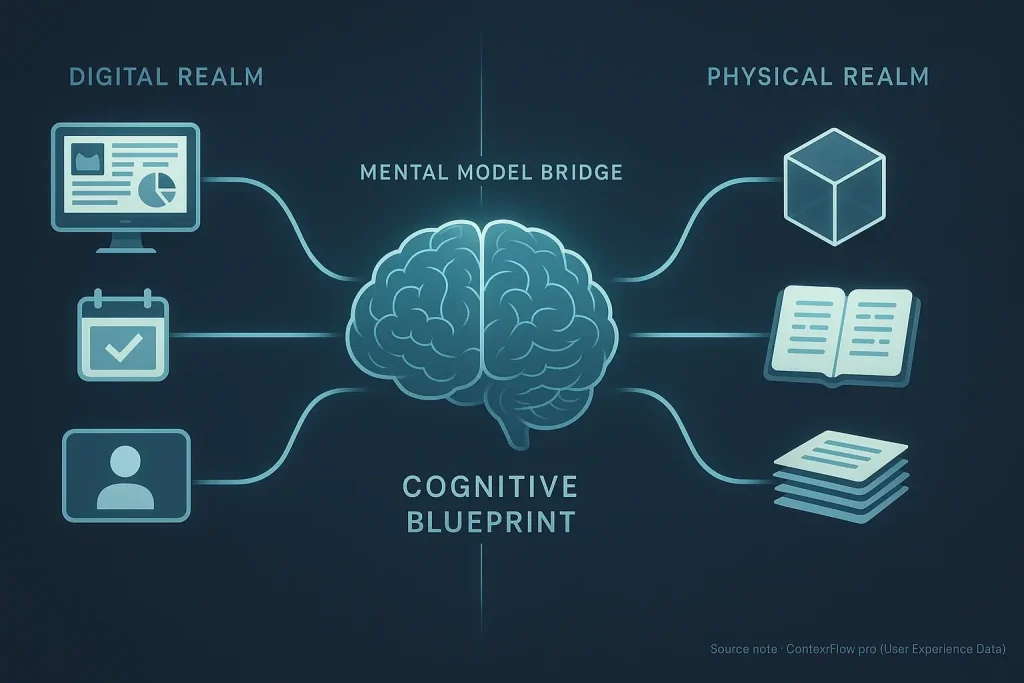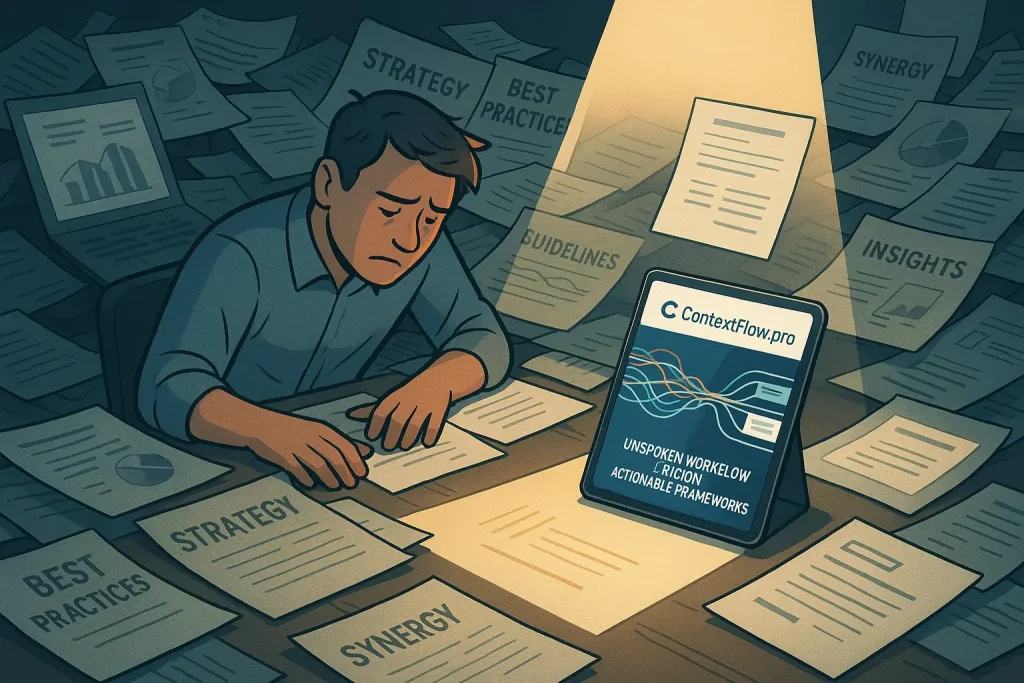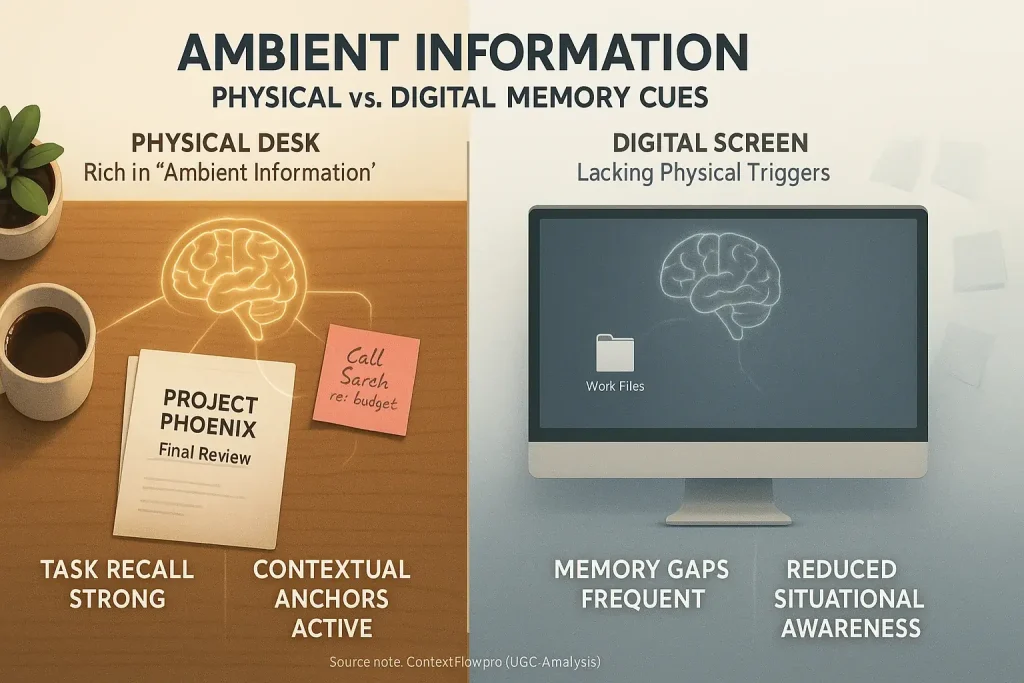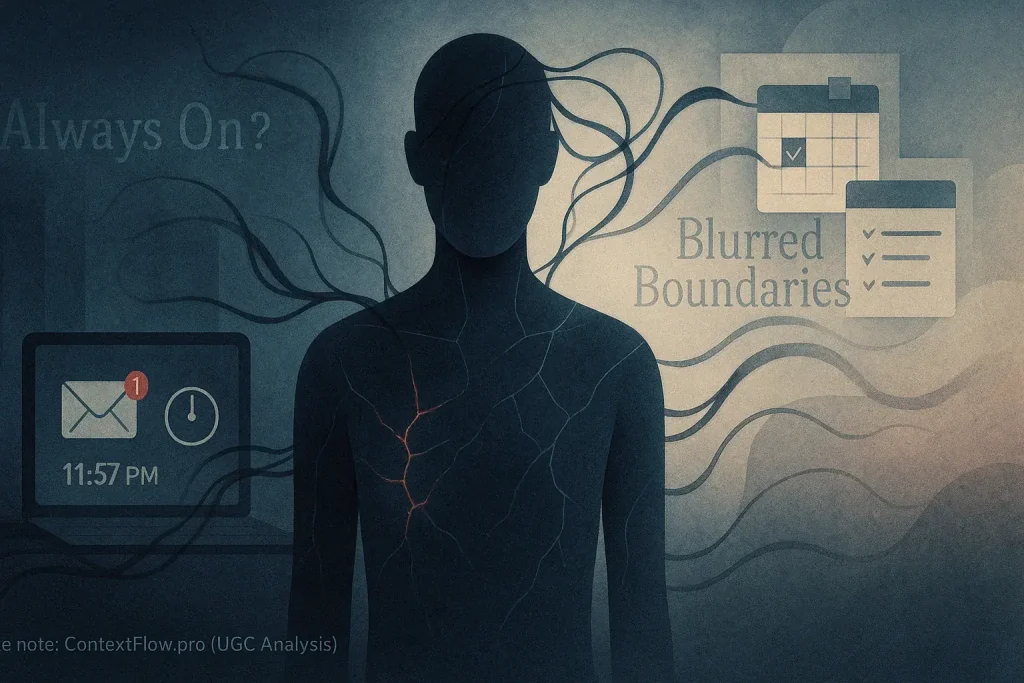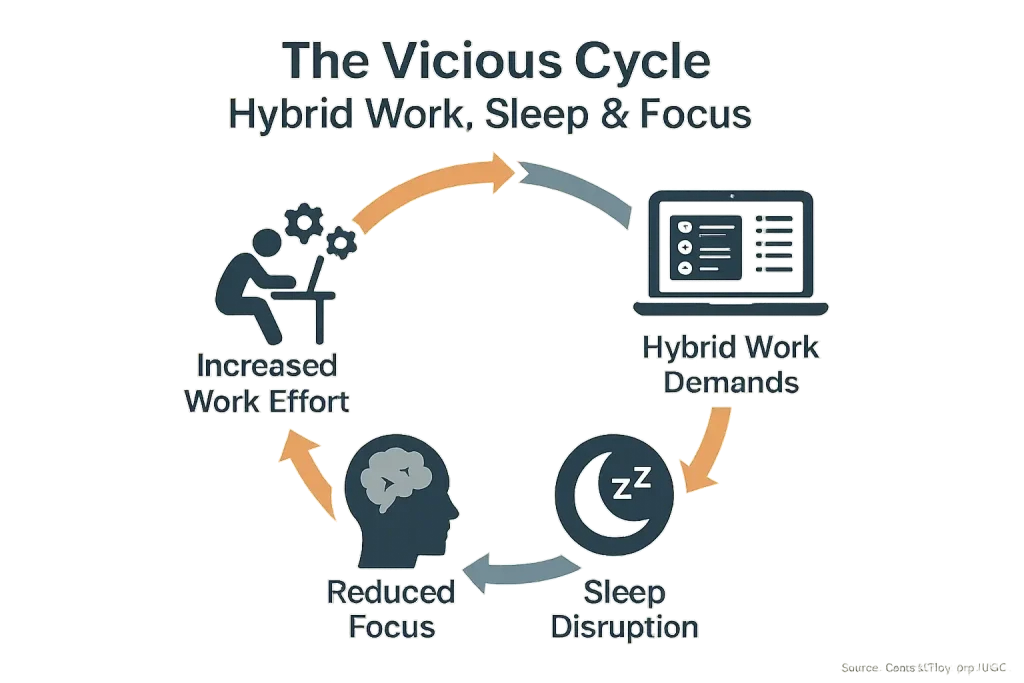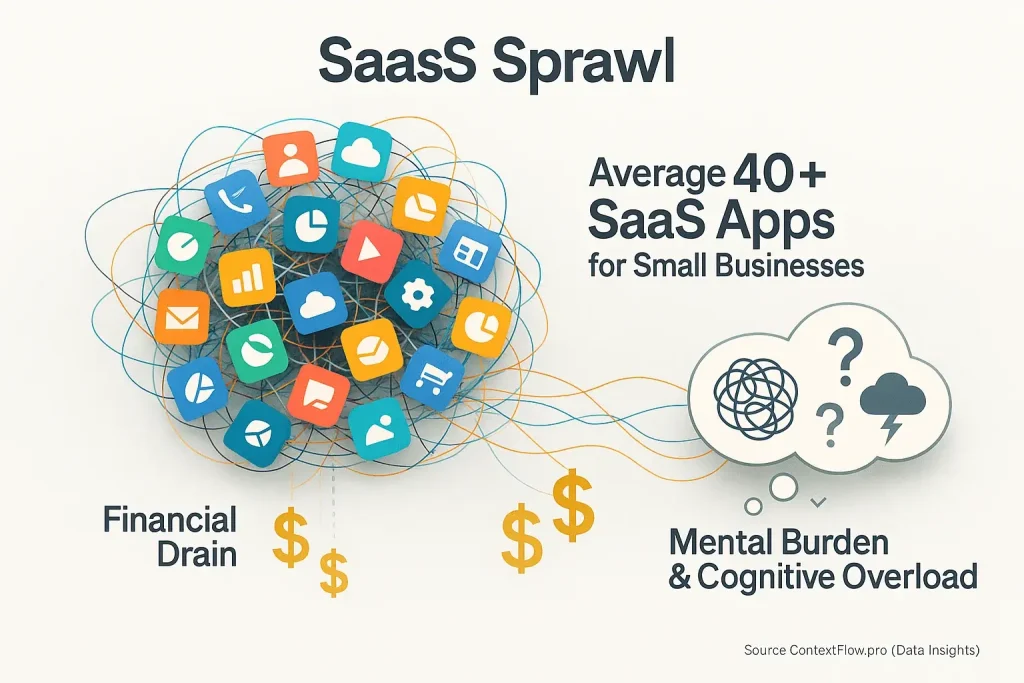Your Brain's Secret Weapon: What Are Hybrid Work Mental Models?
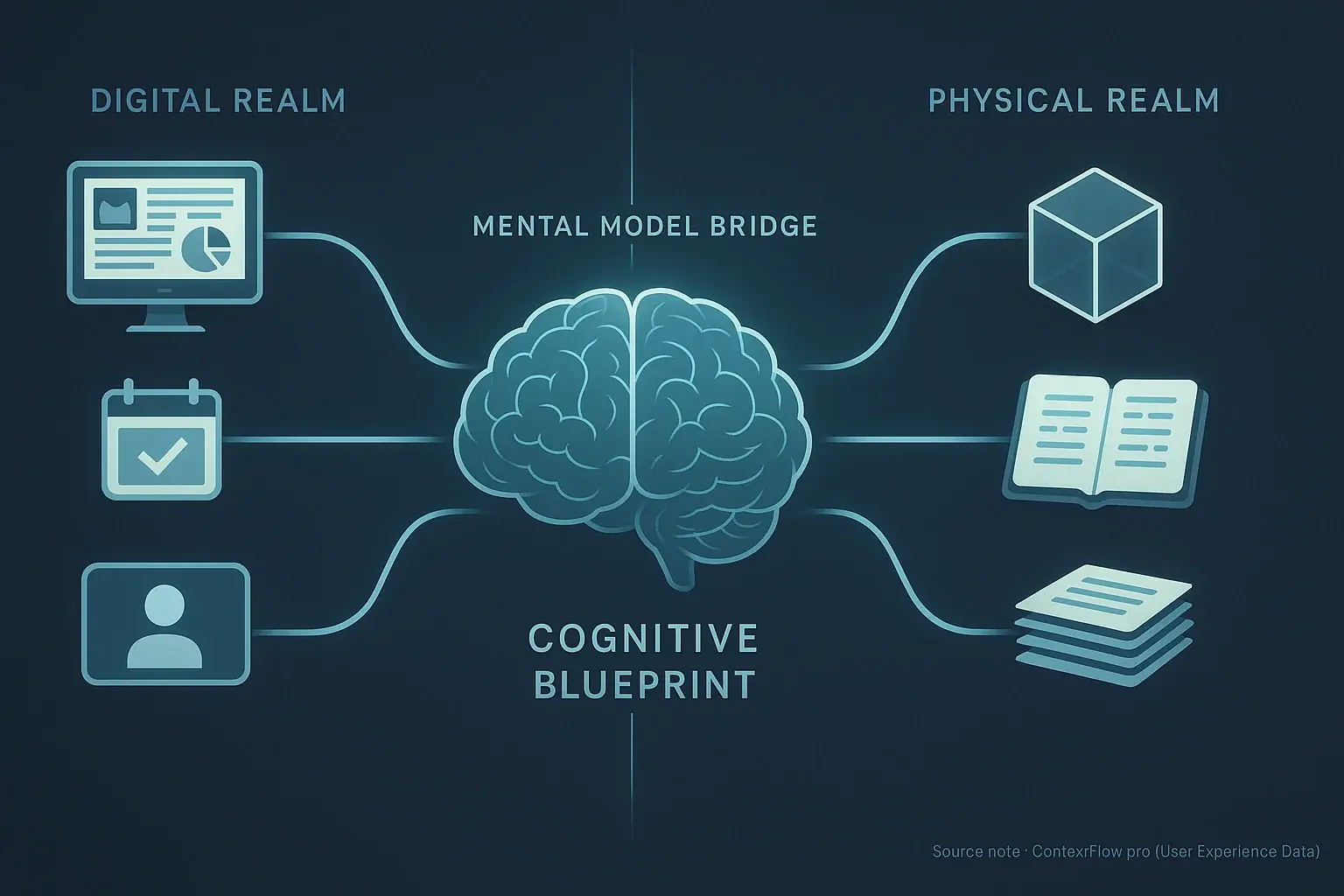
Hybrid work frequently feels like intense mental juggling. Your brain maps digital tasks to physical notes. This internal effort bridges disparate information streams. Your mind naturally crafts internal guides. These guides are hybrid work mental models: your cognitive blueprints for task and information flow.
These mental models underpin coherent context flow across digital and physical workspaces. You instantly recall project status. You know the next action. Consider switching from a detailed digital report to a physical prototype review. Without a sharp mental model, your brain scrambles. Precious seconds vanish during re-orientation. This cognitive friction steals focus. It erodes momentum.
Your brain builds these frameworks automatically. Most professionals employ them unconsciously. The true advantage? Conscious cultivation. Deliberately refining your mental models unlocks substantial hybrid work efficiency. This structured thinking reduces context switching penalties. Fewer details get forgotten. Strong mental models help conquer the daily battle against workplace chaos.
The Unspoken Truth: Why Your Brain Craves a Hybrid Mind Map

Hybrid work often leaves your focus scattered. You repeatedly ask: "Where was I?" or "What was I doing?" This is the daily agony of context loss. Our analysis of user experiences shows brains naturally attempt to build mental models. The constant shuffle between digital screens, physical notes, and varied tools strains this vital cognitive process. Information fragmentation worsens the struggle.
This reveals an unspoken truth: the immense cognitive overhead. Users widely report feeling their brain has 'too many tabs open,' a direct quote from countless forum discussions. This creates persistent mental clutter. A frustrating cycle of forgetting ensues. One professional described it as 'brain-whiplash.' You are deep in a complex digital document. A colleague's physical interruption occurs. Suddenly, your mental gears grind, desperately trying to retrieve the just-vanished digital context. Attention residue clings after each abrupt switch.
A well-developed hybrid mental model can act as an internal GPS. It helps your mind navigate. This significantly reduces the cognitive load of reorienting yourself. Imagine effortlessly resuming a task. Compare that to minutes wasted piecing together fragmented thoughts. This isn't merely about task completion. It's about preserving your precious mental energy. Understanding this helps you manage the chaos.
Your Toolkit: User-Tested Techniques for Building a Robust Hybrid Mind Map

Effective mental models bridge your digital and physical tasks. These models are not rigid structures. The best ones are flexible frameworks. They adapt to your unique hybrid workflow, enhancing context retention.
Many users consciously visualize their entire workflow. They mentally map where digital tasks reside. They also pinpoint physical item locations. For example, a project might live on a Trello board. Its related physical notes stay in a specific desk folder.
Numerous professionals describe drawing quick, messy diagrams. This creates a visual map of everything. Digital. Physical. It’s their brain’s method for understanding the whole picture. This externalization of mental effort makes recall almost automatic. What does your mental map look like?
Our brains are wired for spatial memory. Hybrid workers can leverage this powerful cognitive function. You can consciously place physical items. You can arrange digital desktop icons. These elements become powerful cues, anchoring your mental state to specific tasks.
One professional meticulously arranges their physical desk. Project A gets one corner. Project B gets another. Simply moving to that spot triggers the correct mental context. Their workspace effectively becomes a giant, interactive sticky note for their brain. This makes transitions smoother.
The one-size-fits-all approach rarely works for mental models. Our analysis of user experiences clearly shows this. The most robust mental models emerge from highly personalized systems. You adapt tools and techniques to your brain's unique way of processing information. This is key.
We see users combining specific smart notebooks with unique digital tagging systems. This custom blend might seem complex to an outsider. For the user, it creates an intuitive workflow blueprint. Their brain understands it. Context flows effortlessly. This is their personalized path to mastery.
Brains thrive on predictability. This is a core insight from user experiences. Consistent routines and small rituals act as powerful anchors. They reinforce your mental models. They clearly signal shifts in context to your mind.
Many hybrid professionals swear by a 'digital shutdown' ritual. Before leaving their home office, they close specific applications. They arrange desktop icons. Some even perform a quick stretch. This small, consistent act signals: 'Work is done. Context shifted.' It’s a user-tested way to prevent work-life blur. It maintains precious mental clarity. Could a simple ritual help you?
The Payoff: How a Strong Hybrid Mind Map Transforms Your Workflow
Robust mental models deeply change context switching, unfrictioning your day. Jarring interruptions? They become smooth transitions. This change feels like a seamless gear shift. Not a sudden brake slam.
Concrete benefits then appear. Professionals consistently report less mental fog. Our analysis of user experiences shows re-engagement after task switches is much faster. This saves real time. Key mental energy is preserved.
Broader benefits also become clear. Overall workflow efficiency increases noticeably. Professionals regain strong control over their tasks. You manage your work. Your work does not manage you. This shift empowers proactive mastery. It avoids reactive firefighting.
The true reward is profound. It extends beyond mere productivity increases. Mental exhaustion lessens substantially. This is a consistent report from user communities. Your hybrid work experience becomes more enjoyable. Less frustrating. Work transforms. It feels less like a daily battle.
Your Action Plan: Start Building Your Hybrid Mind Map Today
Begin building your hybrid mind map now. This is a journey. Not a quick fix. Select one technique. Consider new visualization methods. Or specific spatial cues for tasks. Apply it consistently for one week.
Pay close attention to your brain's response. Does that new desktop organization accelerate your re-entry into tasks? Adapt your approach. Personalize it. The aim is reducing your context switching friction noticeably, based on what works for you.
The ultimate goal? A seamless flow. Connect your digital tools and your physical environment effectively. Hybrid work can then become a source of genuine productivity. It absolutely should not remain a daily frustration. User experiences reveal this shift transforms work lives.
You can achieve mastery over your context flow. Consistent, mindful effort builds this skill. Take full control of your cognitive workflow. ContextFlow.pro supports your journey toward this empowered state. Begin now. Refine continuously.

